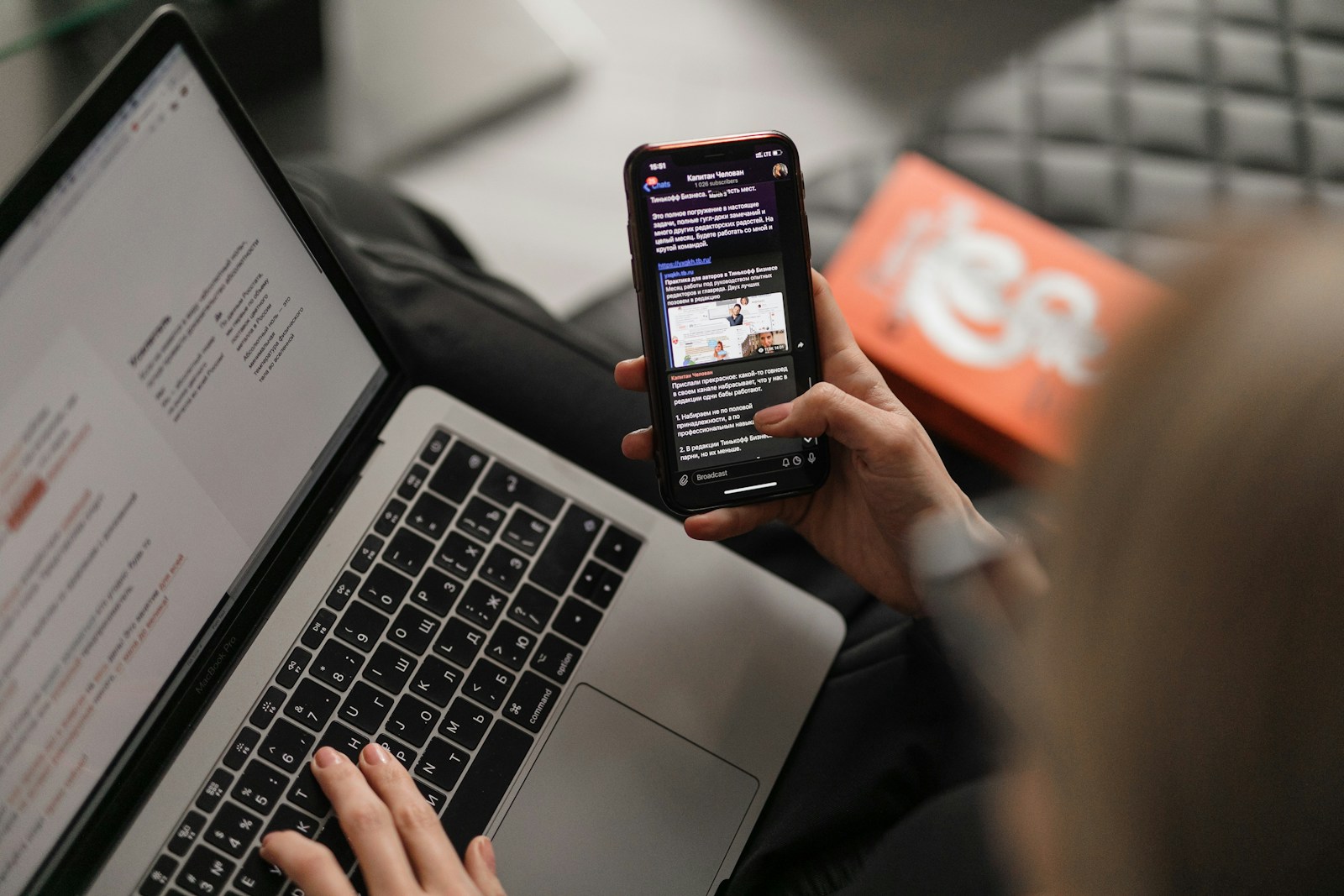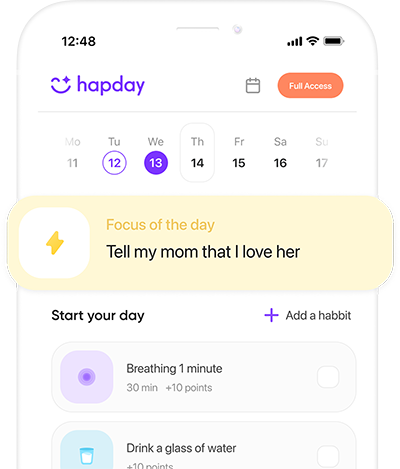In today’s whirlwind world powered by technology, the clashing forces of Attention Deficit Hyperactivity Disorder (ADHD) and digital overload are a growing concern. With our screens demanding more time due to remote work, online learning, and endless social media, those with ADHD are up against a unique set of challenges. Let’s dive deep into how these two realms intersect and explore personalized strategies that can help regain control.
Table of Contents
- Understanding ADHD and Digital Overload
- The Impact of Digital Overload on ADHD Symptoms
- Practical Strategies for Taming ADHD and Digital Overload
- The Role of Parents and Educators
- Conclusion
Understanding ADHD and Digital Overload
What is ADHD?
ADHD is a bustling condition that often involves a whirlwind of inattention, hyperactivity, and impulsivity. According to the CDC, approximately 6.1 million children in the United States live with ADHD, and the symptoms can follow into adulthood. Those with ADHD may experience:
- Fleeting attention spans
- Chronic disorganization
- Forgetfulness that rivals Dory the fish
- Restlessness, like ants in their pants
- Impulsive decision-making that can lead to adventurous detours
The Rising Tide of Digital Overload
Digital overload is like being caught in an endless tidal wave of content and notifications. With 85% of Americans owning a smartphone and adults averaging over 11 hours of media interaction daily, as per Pew Research Center, it’s no wonder we’re feeling drained. This constant information assault can tire our brains, increase stress levels, and zap productivity.
How ADHD and Digital Overload Intertwine
For those with ADHD, the digital age throws up additional hurdles. The constant ping of notifications and the lure of social media can intensify inattention and impulsivity. Insights from the “Journal of Attention Disorders” highlight how deep the hook of digital distractions can set for individuals with ADHD, often pulling them off task.
The Impact of Digital Overload on ADHD Symptoms
Increased Inattention
Our devices are like tireless magicians, always pulling new content out of their hats. For someone with ADHD, this makes focusing on one thing as tricky as nailing jelly to a wall. Researchers at Michigan State University found that individuals with ADHD frequently jump from one digital stimulus to another, disrupting their steady train of thought.
Heightened Impulsivity
In the digital playground, instant likes, shares, and messages are like sugary snacks to the brain, releasing dopamine that fuels impulsive behaviors. The “Journal of Clinical Child and Adolescent Psychology” emphasizes that this can lead to problematic internet habits, feeding a cycle of compulsive online behavior.
Sleep Disruption
That blue glow from your screen late at night? It’s messing with your melatonin, the sleep hormone. People with ADHD are already prone to sleep issues, and digital overload amplifies this, according to “PLOS ONE.” The result is chronic sleep deprivation, a recipe for cognitive disaster.
Emotional Dysregulation
The digital storm also stirs up emotional waters. A constant barrage of information can trigger stress and roller-coaster emotions. The “Journal of Abnormal Child Psychology” links heavy media multitasking to greater emotional turmoil in young people with ADHD.
Practical Strategies for Taming ADHD and Digital Overload
Finding peace amidst the chaos involves a well-rounded approach that tackles behavior, environment, and technology head-on.
1. Establishing a Routine
A reliable routine is a compass in the storm, helping to navigate the day with purpose:
- Morning and Evening Rituals: Start and end your days with calm, consistent activities like meditation or light exercise.
- Scheduled Breaks: Combat brain drain with regular pauses—perhaps the Pomodoro Technique (25 minutes of work, 5-minute breaks) will fit the bill.
- Digital Curfews: Power down screens before bed to help your brain unwind.
2. Prioritizing Tasks
Avoid worthlessness wanderings with structured priority-setting:
- Task Lists: Whether digital or old-school paper, lists keep you on track. Tackle urgent items first.
- Time Blocking: Allocate specific times for different activities, including intentional digital downtime.
- Goal Setting: Clear, bite-sized goals can boost motivation and direction.
3. Practicing Digital Hygiene
Digital detox doesn’t just feel good—it’s productive:
- Notification Management: Turn off non-essential pings and check emails and social media at designated times.
- Mindful Consumption: Be choosy about your digital diet—avoid the mind junk food.
- Technology Breaks: Step away from screens regularly to spend time in nature or with a good book.
4. Modifying Your Environment
Crafting a distraction-free zone can clear mental clutter:
- Designated Workspaces: Create a personal productivity haven, minimizing digital temptations with barriers if needed.
- Visual Cues: Use sticky notes or charts to keep eyes on the prize.
- Ergonomic Setup: Comfort enhances focus—make your space work for you.
5. Utilizing Cognitive Behavioral Techniques
Retrain your brain to default to focus:
- Mindfulness Practices: Techniques like deep breathing and meditation can improve concentration and ease stress.
- Cognitive Restructuring: Challenge negative self-talk to bolster confidence.
- Behavioral Interventions: Collaborate with a therapist to develop tailored strategies.
6. Seeking Professional Support
It’s okay to call for backup:
- Therapy: Engage in CBT or ADHD coaching to master coping mechanisms.
- Medication: Discuss options with your healthcare provider to manage symptoms effectively.
- Support Groups: Connect with others walking a similar path for mutual support and motivation.
The Role of Parents and Educators
Guiding young minds requires active involvement from both parents and educators.
Parental Involvement
- Setting Boundaries: Balance screen time with enriching off-screen activities like sports or crafting.
- Modeling Behavior: Lead by example—show healthy screen habits and join your child in tech-free bonding activities.
- Monitoring and Support: Regularly engage with your child’s digital world to guide them in managing their time wisely.
Educator Strategies
- Incorporating Technology Wisely: Utilize technology to enhance learning while minimizing its use when unnecessary.
- Providing Structure: Outline clear expectations using visual aids to help organize students’ workload.
- Encouraging Breaks: Allow students to pause and reset, which helps they maintain focus.
Conclusion
Balancing ADHD in the digital domain is an art of harmonizing behavior, environment, and professional advice. By understanding such unique challenges and embracing these strategies, individuals with ADHD can enhance focus, productivity, and overall happiness. Managing digital interactions mindfully allows the real and virtual worlds to coexist, turning the challenge of ADHD in a tech-centric age into an opportunity for balance and success.


This article brilliantly captures the complexities of ADHD in today’s digital world. It’s refreshing to see such a detailed exploration of the intersection between technology and mental health. The strategies provided are practical and applicable, making it easier for individuals with ADHD to regain control over their lives. Thank you for shedding light on this important issue!
While I appreciate the effort put into this article, it feels like yet another attempt to sensationalize ADHD and digital overload. The statistics are alarming, sure, but they don’t address individual experiences that vary widely. Not everyone with ADHD struggles the same way with technology, so generalizing may do more harm than good.
The insights on how digital overload impacts those with ADHD are quite intriguing. I never considered how notifications could exacerbate symptoms like impulsivity and inattention. I believe it’s crucial to understand these connections as we navigate our tech-filled lives, especially for educators and parents who want to support affected individuals effectively.
This article seems overly dramatic about ADHD and technology. Sure, too much screen time can be a problem, but blaming digital devices entirely feels misplaced. People have been distracted long before smartphones existed. Why not focus on personal responsibility instead of blaming external factors? We need to stop making excuses for behavior.
I see your point, Derek, but I think it’s important to acknowledge the unique challenges presented by modern technology today. Devices are designed to capture our attention in ways that previous distractions simply didn’t match up to. Acknowledging these differences doesn’t mean we dismiss personal responsibility; it enhances our understanding of the issue.
“Personal responsibility” is essential, but so is recognizing how environmental factors shape behavior! The argument isn’t about blame; it’s about awareness that today’s tools require new strategies for management and coping—especially for people dealing with conditions like ADHD!
“Digital hygiene?” That sounds almost comical! But honestly, this concept makes a lot of sense when you think about how chaotic our online lives can become! It’s time we treat our digital consumption like we would any unhealthy habit—mindfully and intentionally—to improve our focus and mental well-being.
“The blue glow from screens disrupting sleep?” This isn’t news; it’s common knowledge at this point! However, I’m glad the article highlights practical strategies for managing these effects because many people still overlook them despite repeated warnings from experts.
“Nailing jelly to a wall” is such an amusing metaphor! It perfectly encapsulates what focusing feels like for those with ADHD in this tech-saturated environment! The author’s humorous tone makes a serious topic much more accessible and engaging—kudos!
I have always wondered why I feel so scatterbrained after scrolling through my phone all day! This article does an excellent job explaining how digital overload can exacerbate symptoms of ADHD while providing useful tips on managing them effectively without falling into despair or feeling overwhelmed!
This post seems overly optimistic about managing ADHD in a tech-heavy world; not everyone has access to therapy or can make lifestyle changes suggested here! It feels naive not considering socioeconomic factors that affect people’s ability to implement these solutions effectively!
This was an insightful read—it’s fascinating how intertwined mental health issues are with modern technology! While I don’t personally have ADHD, I found myself reflecting on my own screen habits as well; perhaps we could all benefit from some mindfulness regarding our devices!